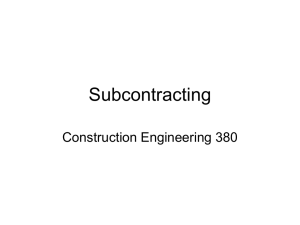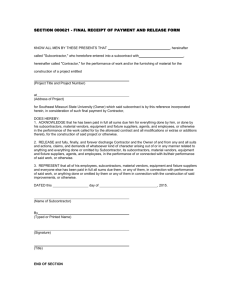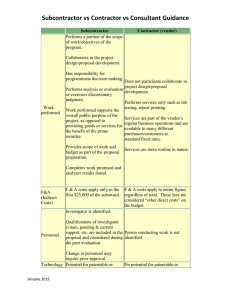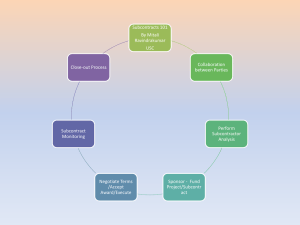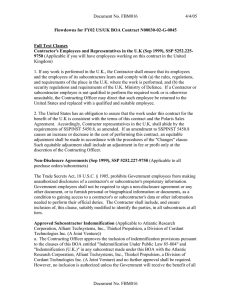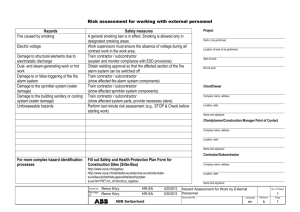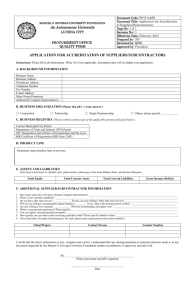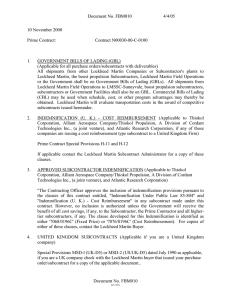Subcontracts • Owner doesn’t “recognize” subcontractors They are representatives of the contractor
advertisement
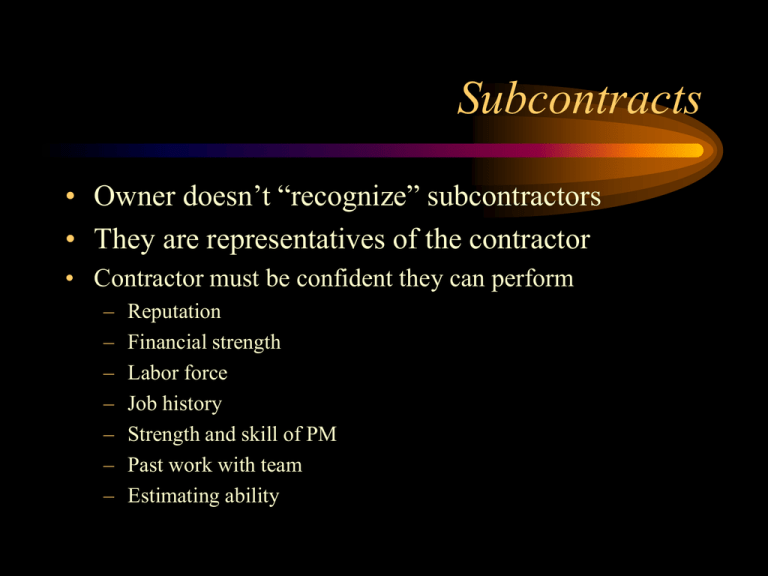
Subcontracts • Owner doesn’t “recognize” subcontractors • They are representatives of the contractor • Contractor must be confident they can perform – – – – – – – Reputation Financial strength Labor force Job history Strength and skill of PM Past work with team Estimating ability Subcontracts • Increasing the number of subcontractors on the job reduces financial risk but increases communication complexity • Decision to subcontract versus self-perform is a risk/return optimization problem • Self-perform work has potential for greater reward, but carries more risk • Self-perform is less risky when you have longterm trades people and well-understood market Subcontracts • Subcontracting passes risk on to subcontractor in return for certain cost • Subcontracting can shorten schedule if subcontractor has access to superior technology or resources (knowledge) • Subcontracting can also reduce schedule flexibility because of contractual constraint Subcontracts • Must bind subcontractor to a cost and schedule consistent with overall project parameters • Contractor serves as conduit for changes and claims on behalf of the subcontractor • Major subcontractors sometime included in partnering team, working with government agencies and field coordination Subcontracts • Need to have hoisting, clean-up, workhours, lock-out, freight and unloading, and labor relations issued spelled out in the subcontract • AGC has several standard subcontract types – Contractor/subcontractor share risk of payment – Subcontractor takes risk of payment – Design-build subcontract Subcontracts • Subcontracts can be negotiated or competitively bid- usually determined in part by the owner • Subcontractors can be asked to do value engineering, but must be careful about bid comparison and bid shopping • Usually pre-qualify subcontractorsfinancial strength, certifications, bonding
